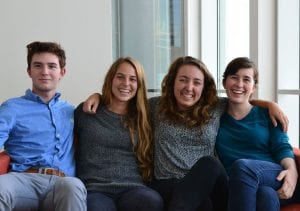Today we have another post to share from our Global Health Fellow, Matthew. It’s a post we find particularly important in sharing with our readers because it paints the reality of what our Fellows and other team members face when they land in Malawi. While, at times, it may appear as simple as setting up our rugged devices in the neonatal ward and saving newborns who otherwise wouldn’t have a fighting chance, that is far from the truth. Matthew explains further:
Looking back over the course of our recent visit to Blantyre, Becky and I realized we came a long way from the misty-eyed hope we felt in our first few weeks there. We saw for the first time our device detect and correct its first apnea. We engineered our way past problems with the way the strap had been designed. We witnessed countless apneas in newborns, watching and hoping on the sideline that our device would make a difference.
After eight weeks in, we started coming to grips with the hard realities of the high-risk neonatal ward called Chatinkha.
A patient this week went from stable to dying in a matter of hours as Prince, Becky and I looked on. The next day, the baby had passed away and we were left with grief and so many unanswered questions. The glaring one being: what could BreathAlert have done? The answer from the doctors and nurses seemed to be “unfortunately, not much.”
This is the reality.
I have long ascribed to the notion that in a hospital with so little the addition of a single device can have a huge impact. This idea is now starting to blur for me. There is so much facing each one of these babies.
One minute, it’s apnea; the next, hypothermia or sepsis. Becky and I faced disheartening results in our trial all because babies had much more life-threatening conditions than the one BreathAlert was designed to treat. The promise of BreathAlert being a critical component in a suite of devices in the future is a very real goal; yet, the idea that it can plug in and make an impact tomorrow on its own is now being overshadowed by the immense challenges already at play in the Chatinkha ward.
As I said, BreathAlert is just one piece in a set of devices being developed by NEST360°. On this latest trip, that’s what Becky and I had; but, the proverbial light at the end of this tunnel lies in the devices that follow, allowing BreathAlert to work to the best of its ability – treating babies who are too cold or dying of an infection more life-threatening than their apnea.
Matthew and Becky faced a tough rite-of-passage on their latest trip to Queen Elizabeth. While the results of their study were not as they had hoped, they were able to show that BreathAlert works to detect and correct apnea effectively. That, in itself, is a huge step forward.
The real challenge at hand is that BreathAlert alone isn’t enough to help very, very sick babies survive. Our team is still grappling with the challenge of what is the right population for this device, and we’re making headway, both in creating complementary devices for these struggling newborns and in finding the right sites for certain pilot studies.
During their fellowship, our Fellows have to confront the kind of difference they can make as just one individual – what the limit of that is and what the potential of that is. That being said, our team – and our technologies – are greater than the sum of our parts.
Emily Mooney
